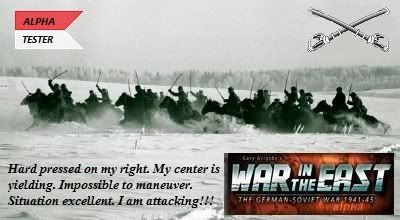ORIGINAL: Froonp
ORIGINAL: Sabre21
I would keep it to the more famous ships..like Bismarck, Hood, Prince of Wales, Yamato, Musashi, Murat, and add in a couple locations where ships were sunk en masse like Midway, Pearl, Taranto harbor, Ironbottom sound, PQ17..I wouldn't get too crazy..I do want to play this some time[:'(]
Murat ?
And no Yorktown, Lexington, Wasp or other CV ?
I only put Murat down because it was a Russian BB so that by itself makes it unique plus the fact it was sunk by a stuka.
If it was up to me, I would only put down those that were pretty famous or were lost in some unique fashion or some famous battle. It would be nice to have a little "blurb" to go along with when and how it was sunk.
It would also be easier this way too..so in the case of the Yorktown..you could include it in the general location of the "Battle for Midway" write-up that also includes the Akagi, Kaga, Hiryu, and Soryu.
The same would go with the Lexington with a "Coral Sea" write-up that indicates that was the first carrier to carrier battle.
As for the Wasp, it was just a lucky sub hit..nothing remarkable about how or when it was lost..the Hornet..same goes there unless you have a write-up for the eastern solomons battle.
You have to draw the line somewhere..
I would include those ships sunk in port if it was a result of a unique event..I'm doing this from memory..so there are bound to be more but I would include the following:
Royal Oak - sunk by U-47 in what was supposed to be an impenetrable Scapa Flow at the outset of the war
Bismarck and Hood - needs no explanation..famous encounter
Prince of wales and Repulse - 1st capital ships sunk at sea solely by airpower
Marat - only Russian BB sunk and by a stuka at that
Italian BBs at Taranto - famous encounter..sunk by a bunch of torpedo biplanes
BB's at Pearl Harbor - needs no explanation..famous encounter
Lexington and Shoho? I think that's right..Coral Sea..first carrier to carrier battle
Carriers sunk at Midway..again no need for explanation..include yorktown and all 4 Japanese carriers sunk
Graf Spee - another famous encounter..not too many pocket BB's out there..let alone in the south Atlantic
Ironbottom sound - here I would list a few of the famous ships collecting barnacles there..including BB's Kirishima, Hiei, maybe the Juneau with the 5 Sullivan brothers, Pt 109, possibly a few more
Musahsi - just because its one of the 2 biggest
Yamato - same as above
Tirpitz - just cuz it caused the allies such a headache just by sitting in a Fjord
PQ 17 - a pretty disasterous encounter in the arctic
USS Indianapolis - cuz they all got ate by sharks..and they had just delivered the 1st a-bomb
Shinano - sunk on maidan voyage and step-sister to the Yamato
Taiho - sunk on maiden voyage
I'm sure I could think of more..but these are ones that really stick in my mind as worthy of an extra write-up.
Andy









